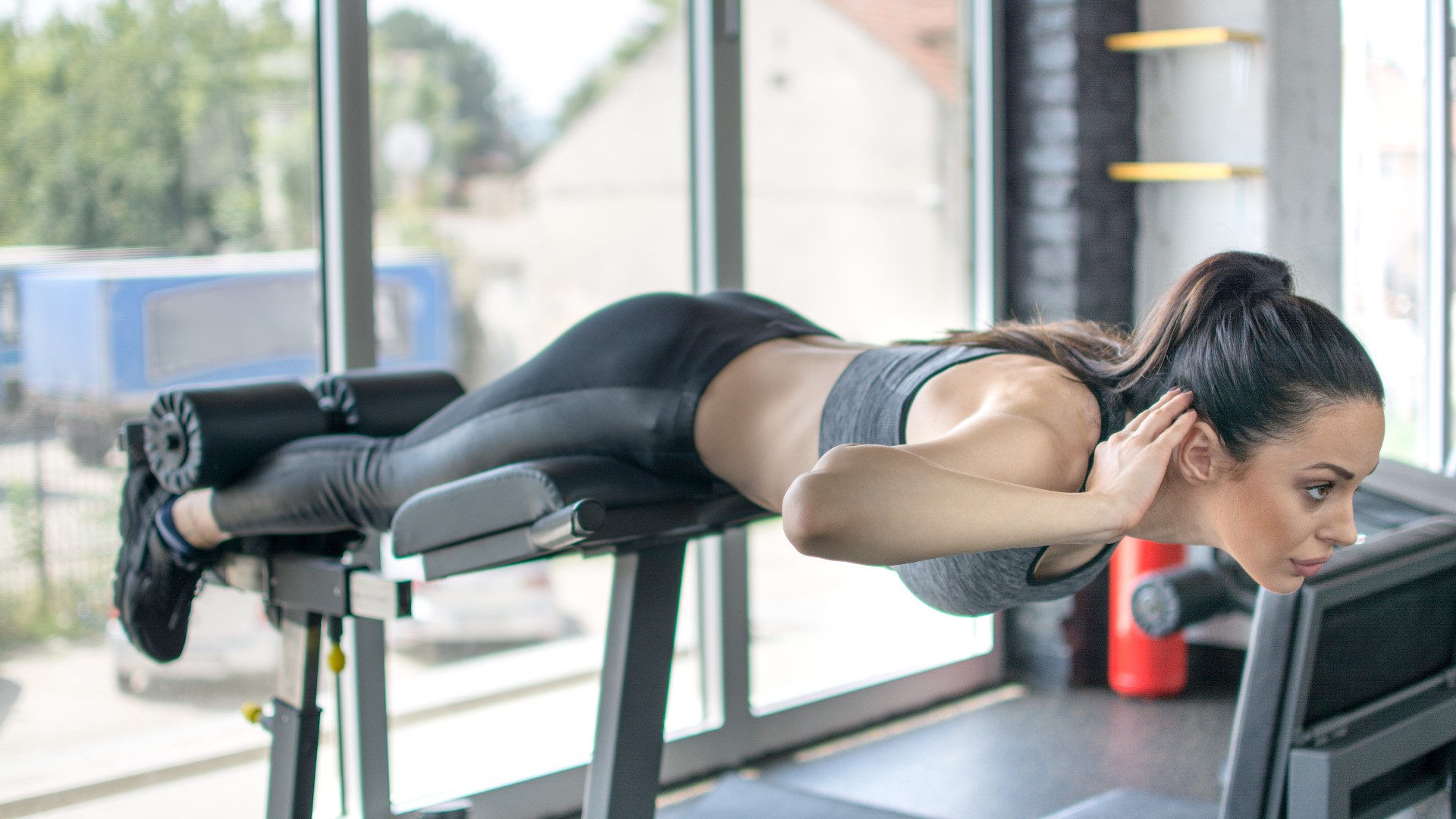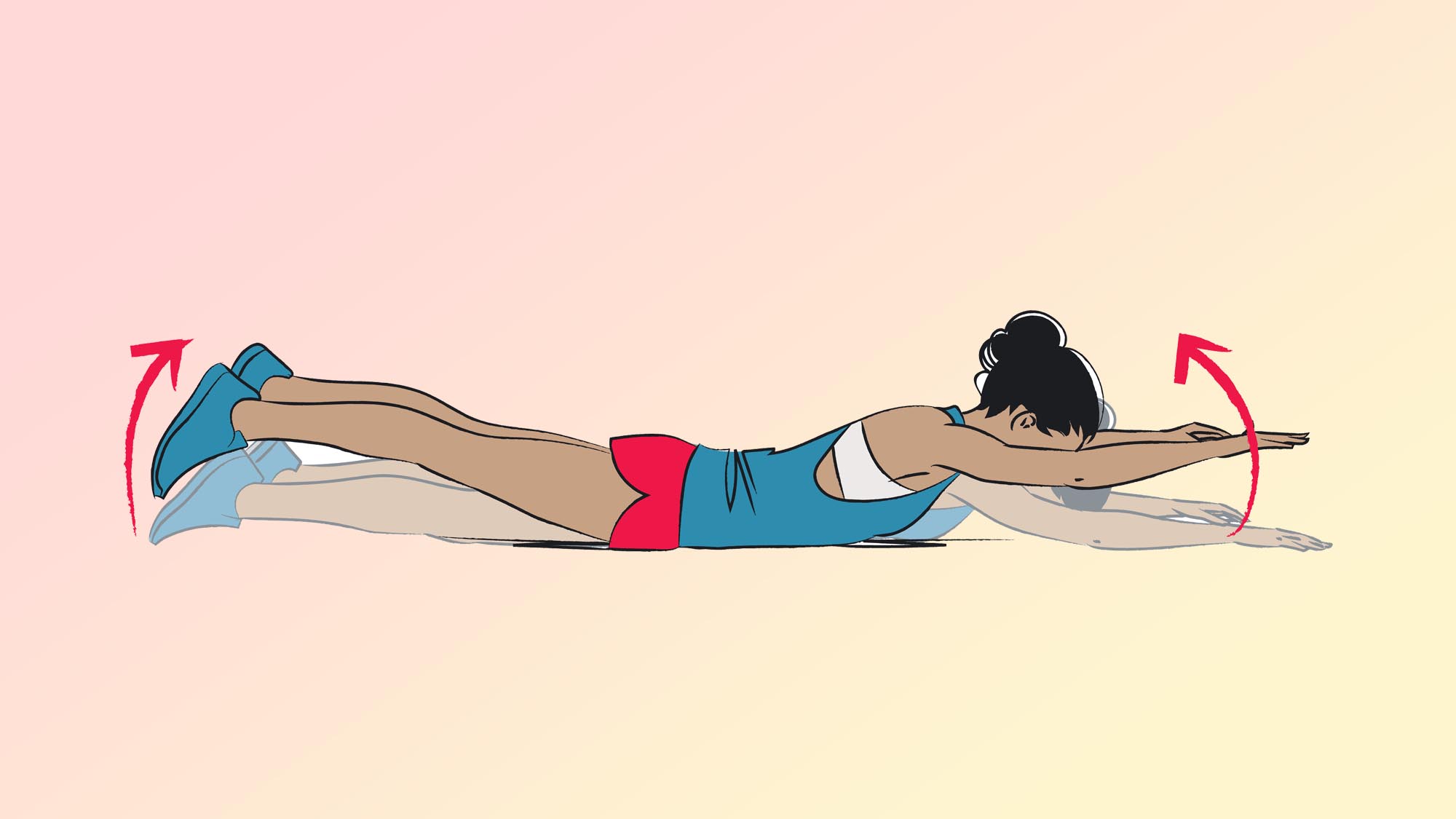
If you haven’t heard about the Sorenson Hold, it’s time to add this challenging, muscle-torching back and glute exercise to your strength program.
As the name suggests, the Sorenson Hold is an isometric exercise. Like wall sits and planks, it means you don’t move, and primarily targets and strengthens your posterior chain muscles located down the back of your body, including the lower back, glutes, core and hamstrings.
Exercises that recruit various muscle groups without movement are great at improving posture, strengthening major muscle groups and activating smaller stabilizer muscles. I decided to try it every day for one week and here are my results.
How to do the Sorenson Hold
To do the Sorenson Hold, you’ll need a GHD machine (Glute Ham Developer), which gym-goers use for exercises such as crunches, back extensions and — of course — the Sorenson Hold.
The goal is to hold your body in a neutral, parallel position to the floor, facing downward. That means you’ll need to contract your core, back, lower back, glutes, hamstrings and calves to keep your body raised without your chest dropping toward the floor.
You could replicate the move without using a GHD machine, but your thighs must be supported, legs straight and feet resting against foot plates (or similar).
How:
Sign up to get the BEST of Tom's Guide direct to your inbox.
Get instant access to breaking news, the hottest reviews, great deals and helpful tips.
- Start with both thighs resting on the padded cushion of the GHD machine
- Straighten both legs and place your feet on the footplates
- Hips should be unsupported just in front of the pads
- Hold both handles and maintain a straight line from head to toe with a neutral spine
- Contract as many muscles as possible, then let go of the handles and hold your position.
Remember to breathe while squeezing your glutes and core muscles. To progress the move, place your hands behind your head.
I did the Sorenson Hold every day for one week — here's what happened to my back and glutes
Here’s what went down.
Day 1
I wanted to dig into the background of the Sorenson Hold and find out how this hellish exercise came to be, and was surprised that it came about during the 1960s in physical therapy.
Following a study by Biering-Sorenson, the hold tests isometric endurance, meaning how long a person can hold themselves in the unsupported prone position and testing the strength of the lower back and hip muscles.
Traditionally, it tested for potential lower back pain — the lower the score, the more likely you were to experience back pain in the future — but now it’s used in gym programs to torch posterior chain muscles, meaning the muscles predominantly active in moves like deadlifts or Good Mornings.
Having never done the exercise before, I started with 6 sets of 30-second holds, resting for 15 seconds between sets. Given that this takes such a short time, I could tack it into the beginning or end of workouts, making it as time efficient as it is effective.
Days 2 & 3
I talk all the time about compound exercises as the best way to maximize potential for your muscles, but that doesn’t necessarily mean isotonic movement (when muscles lengthen and shorten). This hold surprised me — I could feel it everywhere, especially my mid to lower back and glutes. Moreover, it’s deceivingly tough despite the lack of flexion or extension.
Unsupported holds like these are brilliant, low-impact options for strengthening the muscles in your back without load or hip hinge movement. That means if deadlifts or back squats aren’t suitable — the Sorenson Hold could be.
If you suffer from lower back pain, always seek clearance from a qualified medical professional before trying a new exercise regime. I have an ongoing issue with my left rotator cuff muscles, so back exercises are a crucial part of my exercise regime, yet many exercises are off the table. I found this far more effective at engaging my back muscles than similar exercises like Supermans (see below).

Day 4
On day four, I held a barbell plate close to my chest during holds. I didn’t want to overload my lower back, keeping it light, but the added load ramped up the intensity. I had to focus on giving my glutes and back muscles an extra squeeze, lifting my chest to prevent losing form. And man, 30 seconds never felt so long.
It’s personal preference on this one. If you haven’t tried the hold before, start at 20-30 seconds and build up as your strength increases. It should be challenging, but you should be able to do it without back pain. Scale the sets and time cap to suit your fitness ability.
Days 5 & 6
For the next two days, I set my goal at 4-5 sets of 60 seconds, which felt like an eternity. I focused on compound contraction throughout — engaging as many muscles as possible to keep my body stable. By the end of day six, I was ready for this challenge to be over.
Day 7
Although the Sorenson Hold beasted my back, glutes and hamstrings, a big takeaway was the impact on my breathing or lack thereof. I found myself holding my breath or restricting it to the chest.
It’s crucial to focus on measured inhales and exhales, practicing a diaphragmatic breath that helps you to control and expand your breath during uncomfortable exercises like the Sorenson. It’s the same breathing I encourage clients to use during planks, so this served as a reminder that I never stop learning and must practice what I preach more often!
If you struggle to maintain proper breathing during workouts, you could compromise your posture — check out this 5-minute breathing exercise to help you practice awareness around your breath. During the hold, breathe toward your stomach and focus on lifting your chest as you do.
Verdict
I loved learning a new exercise and mixing up my back workouts with this move. It feels like a more intense version of Supermans, reminding me to engage my back properly — something that gets quickly forgotten in people with poor posture and weak back muscles.
If you want to measure your lower back strength and simultaneously activate and strengthen the muscles down the back of your body, the Sorenson Hold should be a go-to.
Exercises like this improve postural stability and control and could also build core strength, helping you progress in exercise performance like running or weightlifting and everyday functional ability. Next time, I plan to try the move one-legged.
More from Tom's Guide
- I did the farmer's walk every day for one week — here’s my results
- Donkey kicks: how to do them and grow your glutes
- I tried Daisy Keech's 8-move, 8-minute abs workout — here's my verdict

Sam Hopes is a level 3 qualified trainer, level 2 reiki practitioner and senior fitness writer at Tom's Guide. She is also currently undertaking her Yoga For Athletes training course. Sam has written for various fitness brands and websites over the years and has experience across brands at Future such as Live Science, Fit&Well, Coach, and T3.
Having worked with fitness studios like F45 and Virgin Active, Sam now primarily teaches outdoor bootcamps, bodyweight, calisthenics and kettlebells. She also coaches mobility and stretching-focused classes several times a week and believes that true strength comes from a holistic approach to training your body.
Sam has completed two mixed doubles Hyrox competitions in London and the Netherlands and finished her first doubles attempt in 1:11.
